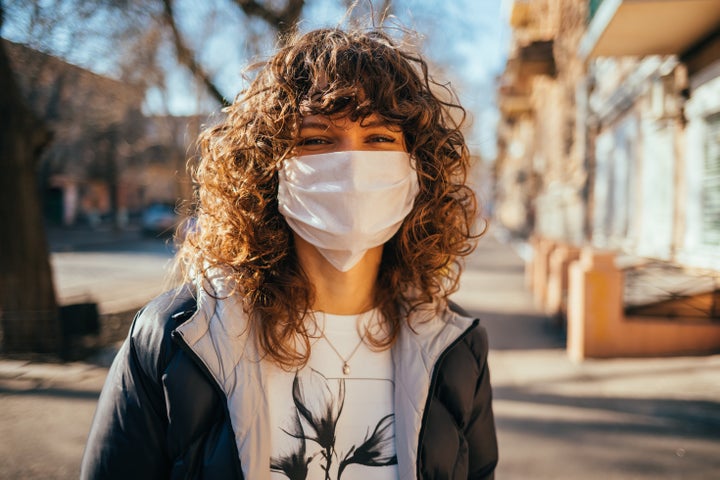We’re here to guide you through the coronavirus pandemic. Sign up to the Life newsletter for daily tips, advice, how-tos and escapism.
The eyes are the window to the soul, as the old saying goes – and with mask-wearing now the norm in most indoor public settings, our eyes are having to do an awful lot of the legwork when it comes to communicating with others.
Where once you could smile at a neighbour you passed in the street, it now becomes an awkward affair if you’re both wearing masks. Are they squinting, frowning, or are those creases around their eyes a sign they’re smiling back?
Some people choose to wave instead, or give a thumbs up. Others opt for a friendly nod, salute or – God forbid – finger guns. All of a sudden, we’re having to get creative with how we acknowledge others. Not only that, we’re also working harder to decode what people are trying to convey to us.
“Typically, it’s the combination of our facial features coupled with speech and other non-verbal gestures that helps us communicate with others,” says Dr Charlotte Hilton, a psychologist and British Psychological Society member.
One of the biggest issues with mask-wearing, then, is that we don’t pick up all the facial cues we normally would, says Professor Steven Taylor, a clinical psychologist at the University of British Columbia and author of The Psychology of Pandemics. This makes communication challenging.

What are the challenges? Well, the nose and mouth, alongside the eyes, give people the full picture of the emotions we experience and convey visually – happiness, sadness, disgust, anger. Take that away and you might struggle to work out how the person you’re talking to really feels. If they say, “you’re an idiot,” the meaning will vary greatly depending on their facial expression while they say it. And then, miscommunication arises.
Another issue is that we rely heavily on mouths for lip-reading. If we don’t hear what a person says, we often fill in the gaps by looking at the shapes their lips make as they speak. This is even more important for those who are deaf, which is a whole issue in itself. Masks also make it harder to hear what people are saying as their voices might be muffled. This poses additional challenges to those with hearing loss, prompting the design and manufacture of transparent masks to tackle this.
“We're learning to adapt to mask-wearing.”
- Dr Charlotte Hilton, a psychologist and British Psychological Society member
While there are limited studies on face mask-wearing and the impact on our communication, one study in a hospital setting did find patients perceived doctors who wore face masks in appointments to be less empathetic. Not great news for building trust and rapport.
But despite these challenges, we’re learning to adapt, says Dr Hilton. Wearing a mask removes the lips, nose and mouth from the equation, but we still have our speech and other gestures to rely on.
“It’s not like we’ve gone blind and are having to learn how to use a cane,” says Prof Taylor, “we’ve lost some sensory input and we’re learning how to use other cues. Just like people who are losing their hearing will start to rely more on lip-reading, now people are relying more on facial cues and voice intonations.”
You might not be able to see a person’s mouth, but you can often hear it in their voice, for example. If they’re happy, the tone might be light, almost musical, whereas if they’re sad, they might speak more slowly or at a deeper pitch.
“People are looking more for cues,” says Prof Taylor, “and because people are having trouble being heard when they’re using masks, they’re speaking up more. And, it’s just anecdotal observation, but people are using voice cues more to communicate emotion to people.”
Will our communication change completely as a result, then? “We might adapt the way we communicate with others while wearing masks, but we also have time communicating with others in situations where we’re not wearing one,” Dr Hilton points out. “It’s likely, over time, we’ll learn to adapt our communication style while mask-wearing, but retain our ability to communicate in the same way we did prior to having our mouth and nose covered.”
Potentially, we’ll learn to alternate between those two modes of communication. It may not be easy, though. “Whilst humans have the capacity to be adaptable, it can take time to become more familiar with new things, such as wearing and seeing others wear a mask,” says Dr Hilton.
“We’ve heard the phrase ’new normal’ used extensively during the pandemic and this is perhaps because we tend to feel more comfortable and safe with things, people and environments that are familiar to us.”
Over time, it’s likely we’ll continue to adjust and find methods of communicating with others. With our thumbs up and our crinkly eyes, we’ll adapt and survive.
